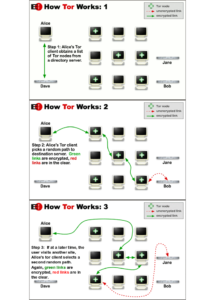Welcome to this week’s Tip of the Hat!
The amount that you spent web conferencing has most likely increased exponentially in the last few weeks. Library workers working from home now rely on web conferencing software for daily operations, including meetings and check-ins with other colleagues. With this shift to web conferencing, though, comes a shift in the level of risk to patron privacy.
Most libraries rely on third party web conferencing software which, like any other third-party vendor, brings its own set of risks to patron privacy. However, when you fundamentally change library operations to embed a third-party application into almost all parts of core operations, the existing privacy risks of that application change dramatically. You also introduce new risks into the mix! It’s already hard to keep up with all the risks to patron privacy in normal operations, and a rapidly changing work landscape compounds matters.
Let’s take Zoom, for example. Many libraries and library vendors use Zoom as their primary web conferencing application before the COVID-19 outbreak. That number only increased as many workplaces went remote, with many workers relying on their institutional Zoom accounts for both professional and personal online meetings. Other workers took advantage of Zoom’s generous free plan. What was once a tool used for webinar presentations and professional organizational group meetings, Zoom has become a lifeline for many remote library workers to stay connected to the library world for the foreseeable future.
With the increased use of Zoom came increased scrutiny of the application from the increasing number of remote workers in several industries. Soon after the shift to remote work started in earnest across the US, news media started reporting on privacy and security concerns with Zoom. One of the earlier news reports described Zoom’s “attention tracking” function, where an administrator can keep track of meeting participants who clicked away from the Zoom window. This level of tracking by the meeting organizer does not reach the level of other tracking software used by businesses to monitor employee productivity, but this tracking can still encroach on employee privacy. “Zoombombing” – the act of gatecrashing a public Zoom meeting and bombarding it with inappropriate material or attacks – is also on the rise, compromising the security of business and other meetings held by users who are newer to the platform.
Zoom’s data privacy practices have received increased scrutiny in the last week with the mass movement to remote work. In the same article about “attention tracking”, the reporter also touched on Zoom’s privacy policy’s vague language around selling personal data. The privacy policy has since been updated to remove the first sentence which caused the most concern, but the vague last sentence in the paragraph remains – “So in our humble opinion, we don’t think most of our users would see us as selling their information, as that practice is commonly understood.” – which is still a privacy concern. In addition, Zoom’s iOS App was sending user information to Facebook, which again wasn’t made explicitly clear in the privacy policy. Zoom released a statement that they will change the app to no longer send this information, but Zoom’s overall privacy practices and policies remain unchanged as described in this Twitter thread.
Your library might be using Zoom for business meetings, or it might be using Zoom for library programs, such as delivering online programs (like storytime or classes) or research/reference services. In both cases, Zoom might be collecting and processing patron data for their business purposes, increasing the risk of a privacy breach. You can take some actions to mitigate the new risks to patron privacy from using Zoom:
- Use Zoom’s end-to-end encrypted chat feature [Update – the E2EE feature turned out to be false advertising.]
- Limit the amount of patron data disclosed in Zoom, including text chats
- Do not record video, voice, or text chats that involve patron data, including services to patrons conducted over Zoom
- Do not share files with patron data over Zoom’s filesharing feature
- Review privacy and security settings on the administrator, organizer, and user levels
- Follow best practihttps://lifehacker.com/how-to-prevent-jerks-from-ruining-your-zoom-meetings-1842453487ces to prevent Zoombombing, including enabling the waiting room feature, limiting screen-sharing and voice controls (muting participants by default when they join), and locking the session when all attendees have arrived.
Limiting patron data disclosure on third-party applications is a challenge for a remote workforce. Choosing third-party applications with strong privacy and security practices is one of the best ways to mitigate privacy risks. Taking the time to assess privacy and security during a major global health crisis, nonetheless, doesn’t come naturally if you are not used to making critical privacy decisions under pressure. Settling into the new normal provides the opportunity to reassess data privacy and security practices in the workplace, including mitigating expanded or new risks to patron privacy. In the case of Zoom, limiting the amount of patron data transmitted through the application as well as making full use of privacy and security settings can help mitigate these privacy risks.

